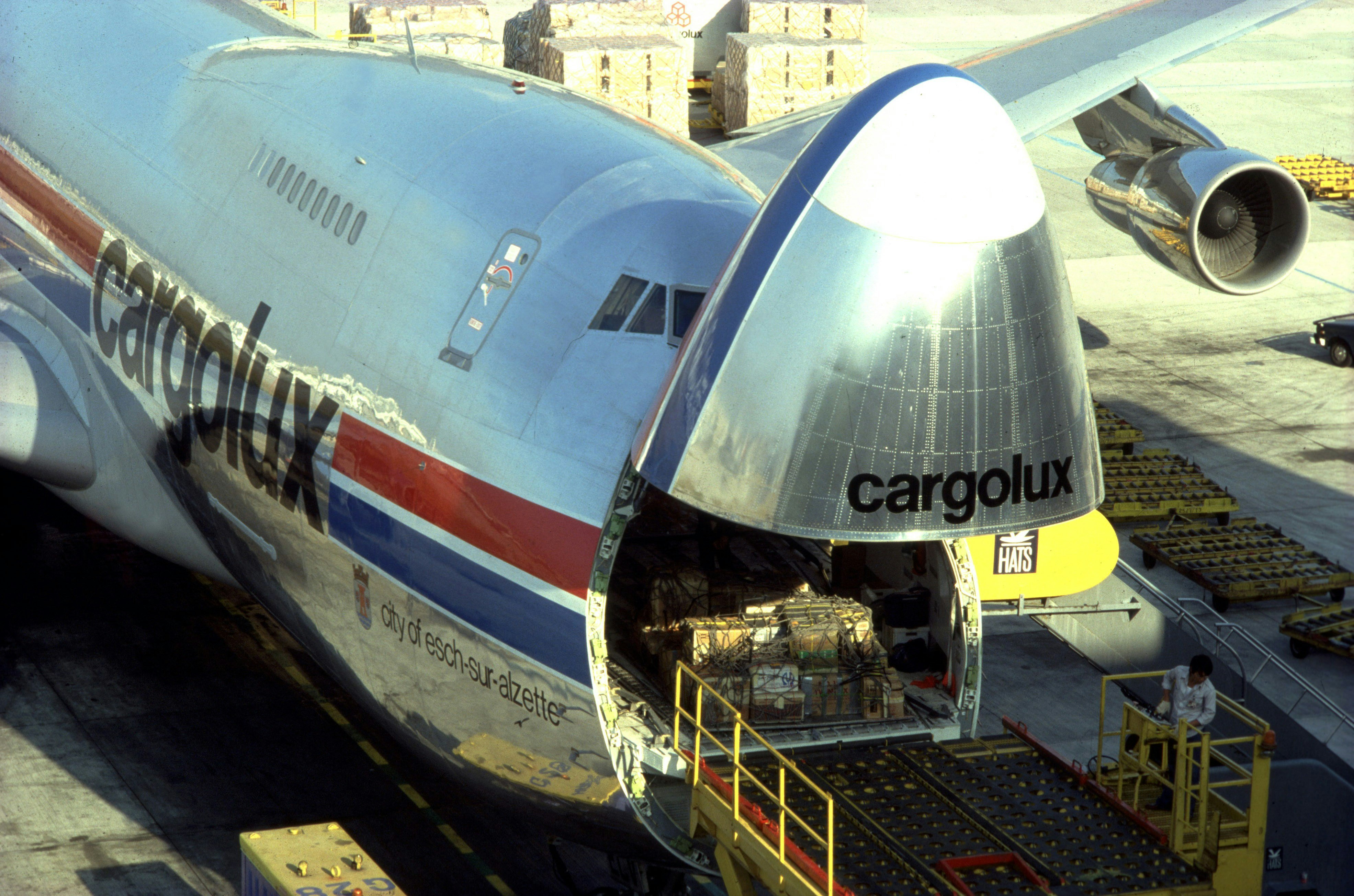1980 - 1989
The lean years
After a first decade marked by rapid growth, fleet expansion, and investment in the future with the switch to the jumbo Boeing 747, Cargolux hit strong headwinds in the beginning of the eighties.
Weathering the storm
After a first decade marked by rapid growth, fleet expansion, and investment in the future with the switch to the jumbo Boeing 747, Cargolux hit strong headwinds in the beginning of the eighties. The global economy crashed, and the subsequent downturn seriously affected the industry. The interest rates went through the roof, the demand for air cargo services declined impacting yields, and revenues suffered greatly.
Cargolux was close to bankruptcy, compelled to re-structure and let go of one third of its employees. The mood in the airline was at an all-time low but employees were determined to pull through and rebound from these dark times. Through hard work, perseverance, and determination, the company survived and made it through to witness the economic recovery.
Despite the recession, Cargolux still had its second 747-200 freighter on order from Boeing, which was delivered on October 12th, 1980. As the turmoil continued and the unstable economic situation persisted, the company carried on with business but at the end of 1982, Cargolux underwent a financial restructuration and new shareholders were introduced. The Banque et Caisse d'Epargne de l'Etat (Spuerkees) and Société Nationale de Crédits et d'Investissements (SNCI) became the new shareholder of Cargolux along with other financial institutions such as BGL, BIL and the Kreditbank.
-
-
![747-200 frontload]()
-
Cargolux's second 747-200
-
![747-200 inflight]()
LX-DCV
-
-
![10year logo]()
Gallery
Bouncing back
Slowly but surely, the economy recovered, and Cargolux was able to strengthen its commercial activities and hire back most of the employees that had been laid off. Business developed mostly in the Far East and North America, and the two main routes were served by the company’s 747-200s. The remaining DC-8s in the fleet were mostly devoted to ad-hoc charter services and subleasing to other companies before being gradually phased out at the end of 1985.
To cater for the expanding business, Cargolux acquired 3 747-200F in 1986.
One of the strong drivers in Cargolux’s return to profitability was the launch of annual Hadjj pilgrim flights. Already back in 1978, the idea emerged to lease an aircraft from Boeing and charter flights from various African countries to Saudi Arabia for the pilgrimage. In 1983, this idea materialized and Cargolux flew a leased 747 from Lagos to Jeddah where the pilgrims could make their onward journey towards Mecca. The intensive operation lasted only a few weeks per year after which Cargolux returned the leased aircraft to Boeing. The endeavor was so successful that the following year, Cargolux leased 2 aircraft from Boeing for the annual pilgrimage and Cargolux kept the practice going for several years.
Gallery
The digital revolution
In order to prepare for the future and embrace the emerging digital era, in 1982, Cargolux designed a new automated cargo system, CHAMP (Cargo handling And Management Planning). Unlike other IT systems available at the time, CHAMP extended over the entire cargo business chain in all commercial, operational, and financial aspects (rating, prorating, costing) in one innovative and powerful integrated manner, allowing interoperative decision-making at all phases of air cargo, concentrating on optimization and profitability of flights, routes and the network. After its launch at home base, the first Revenue Accounting functions were rolled out on a worldwide basis as of August 1983.
This development allowed Cargolux to digitize its processes and centralize information gathering to provide faster, smoother service. Both employees and customers gained from this increased efficiency. The launch of integrated IT platforms coupled with the global economic growth contributed to Cargolux’s recovery.
In 1986, after half a decade of financial uncertainty, Cargolux registered a profit of over $11 million, which meant business soared. With a steady global trade growth and a strong Northern American market, Cargolux witness heightened market demand and the daily aircraft utilization of the 747 freighters reached 13 hours.
-
The CHAMP team is the 80s
-
Gallery
The Lionair venture
After the successful sub-leasing of passenger airplanes and HADJ pilgrim flights and in an effort to diversify service offerings, on December 22nd, 1987, Cargolux also decided to launch a part-passenger joint venture with Luxair. The airline, baptized Lionair, initially operated two 747-121 aircraft offering passenger services from London-Stansted and Manchester to Florida and the Caribbean for the tour operator wholesaler Airtours. Destinations in the Caribbean were Barbados, Antigua, Puerto Plata, and Santo Domingo. In Florida the destination was Orlando (Orion Air). The airline also offered passenger services on the upper deck of its freighter aircraft while continuing to provide mail; and cargo capacity on the main deck an in the belly hold.
The set-up included two distinct Air Operator Certificates; the passenger segment was certified as Lionair but the freight operation continued to run under the Cargolux AOC. However, despite successful beginnings, the initiative turned out not to be viable and the company eventually ceased operations in early 1990.
After turbulent beginnings at start of the decade, business picked up and Cargolux became once again a sustainable and profitable enterprise. In 1987, after 17 years at the helm of our airline, Salén shipping company sold its shares and the company owners evolved. Lufthansa then acquired a 24.5 percent stake in Cargolux’s capital while Luxair increased their shares by 10 percent to 24.53 percent. With this new momentum, 3 jumbo freighters spanning an expanding global network, and a steadily growing workforce, Cargolux was ready for a new decade of service excellence.
-
![DC-8 and 747-200]()
Loading of a DC-8 and a 747-200
-
![747-200 LX-ECV offsize loading]()
LX-ECV offsize loading
-
![747 200 LX ECV offsize loading2]()
Gallery













